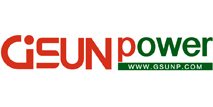TOPcon and HJT solar cell
Photovoltaic cells will usher in new technological changes. At present, mainstream photovoltaic cell equipment on the market may be replaced by two new technology equipment, and many companies are investing in betting. With the mass production of two equipment known as "next generation photovoltaic cell technology" soon.
The age of N-type batteries is here.
TOPCon is the tunneling oxidation passivation contact cell. Like HJT (heterojunction), it is considered the next generation photovoltaic cell technology.
Photovoltaic cell technology has gone through many iterations: from conventional aluminum backplane BSF batteries (1st generation) to PERC batteries (2nd generation), and then to batteries (TOPCon) and HJT batteries (3rd generation), HBC batteries (4th generation) and so on. With each new technology iteration, the photovoltaic cell industry will usher in a new round of expansion cycle of 2-3 years, which will drive the surge in demand for next-generation battery equipment.
Monocrystalline PERC (passivated emitter back contact cell), which is currently the mainstream battery equipment in the market, has made important contributions to pushing photovoltaic power generation towards the era of parity.
However, when PERC's photoelectric conversion efficiency reaches 23.6%, which is gradually approaching the ceiling, cell manufacturers have successively deployed N-type solar cell technology with higher efficiency, lower degradation rate, and higher power generation. TOPCon and HJT are the mainstream technologies for N-type cells at this stage, and both have entered the introduction period for large-scale mass production, and are expected to gradually increase in 2021. Once new technology replacement becomes a trend, it will usher in a new round of cost reduction bonuses.
TOPCon and HJT are considered to be the next generation of high-efficiency battery technologies after PERC. In contrast, HJT is a revolutionary technology and is completely incompatible with existing PERC equipment. If this technology is used, upstream and downstream equipment in the industry chain will need to be re-developed and constructed, but with fewer processes. However, TOPCon has high compatibility with PERC, and the investment cost is relatively lower. On the whole, TOPCON and HJT still need to further reduce costs and improve processes in the mass production process.
